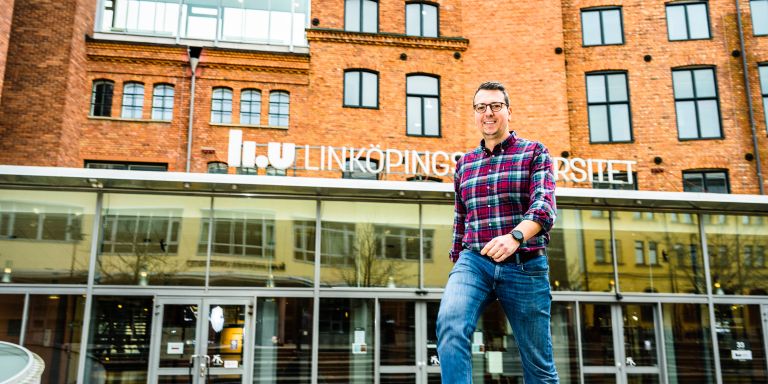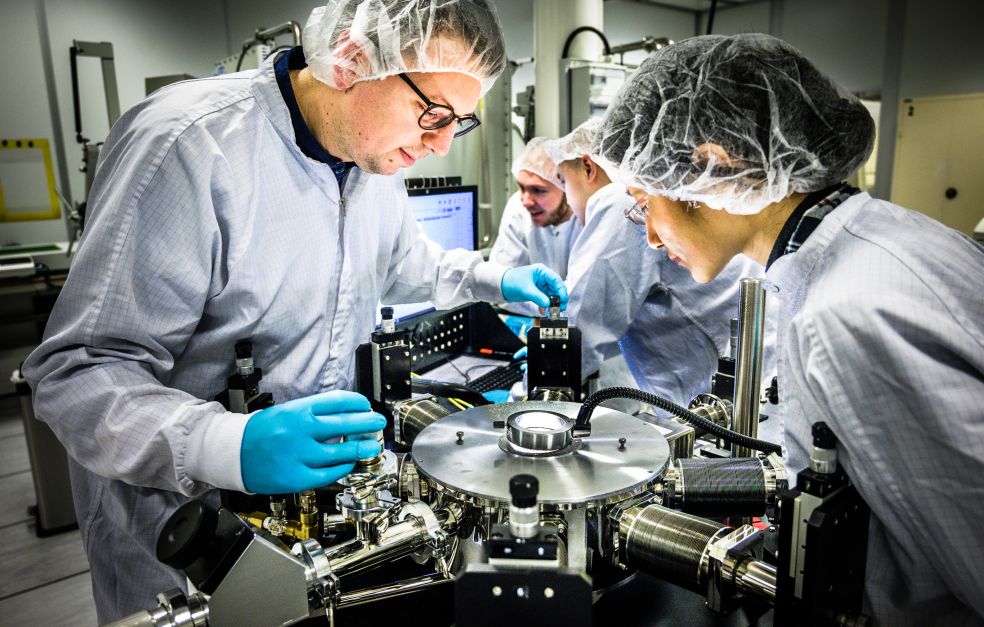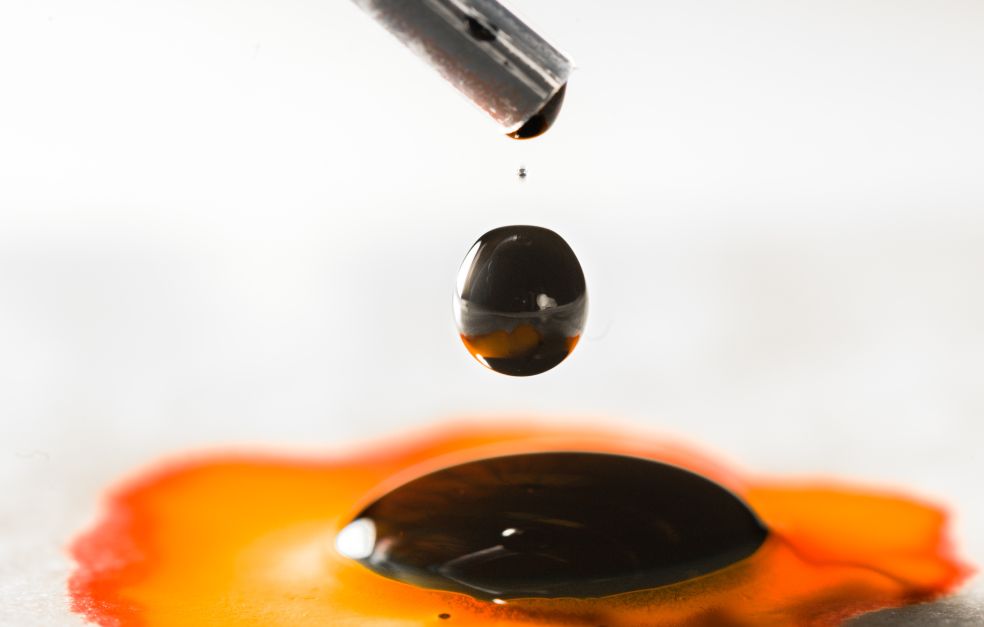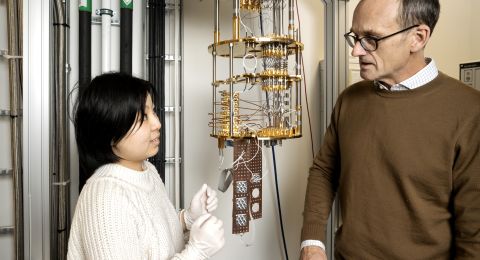It is possible that future electronics will be composed entirely of organic materials that can conduct electricity. But producing stable materials has been a challenge for researchers. Wallenberg Academy Fellow Simone Fabiano has stumbled upon a completely novel approach – more or less by chance.
Simone Fabiano
Associate Professor of Organic Electronics
Wallenberg Academy Fellow 2021
Institution:
Linköping University
Research field:
Organic nanoelectronics and new polymer materials
Organic electronics employ materials like plastics and fabrics rather than conventional semiconductors like silicon. These organic materials are more flexible and cost-effective than traditional alternatives. Moreover, they have potential environmental benefits as they consist of long chains of abundant chemical elements like carbon, hydrogen, oxygen, and nitrogen linked together to form polymers.
Mobile phone screens are among the applications that currently utilize organic electronics, but their potential uses extend beyond that to flexible solar panels, energy storage, sensors, bioelectronics, and more. Fabiano highlights that organic electronics could also have a significant role to play in the development of Internet of Things (IoT) devices. IoT encompasses all internet-connected devices that can communicate with one another and their surroundings. According to a major global chip manufacturer, it is predicted that by 2035, there will be a trillion IoT devices connected worldwide.
“Organic electronics possess the right properties to succeed. The trick is to make them stable enough,” Fabiano explains.
Given the potential risks of the entire planet being overwhelmed by new forms of plastic, it is essential that organic electronics are designed to be environmentally friendly and sustainable.
Avoiding leakage
To transform organic materials into electrical conductors, specific molecules are added through a process called doping, which modifies the electric properties of the polymers, allowing for the creation of an electric current. However, small-molecule dopants have the tendency to leach out of the materials, particularly when exposed to heat, which poses a challenge to maintaining stability.
A serendipitous discovery was made in Fabiano’s lab about a year or two ago, which rendered the doping process unnecessary. They found that when two polymers with the right energy levels are mixed together, electrical charges can spontaneously move from one polymer to the other, making the whole blend conductive. This was an astonishing discovery – made more or less by chance.
Fabiano explains:
“We wanted to test a novel method to produce organic transistors, which involved combining two polymers with opposite charge transport properties, when one of the students working in my group made an unexpected discovery. They observed that the transistor they had made could not be switched off. We spent a few weeks trying to understand what had happened until we finally realized that we had made a major breakthrough.”
Better conductivity
These findings were published in 2020 in an article outlining the necessary properties of each polymer to produce the phenomenon. The Wallenberg Academy Fellow program is currently funding the next steps in this research, which aims to expand upon the existing knowledge and develop more durable forms of organic electronics.
“We’ve seen that the polymers we're working with are tightly bound together. They don't even separate when heated, which not only enhances their conductivity but also makes the material incredibly stable.”
It remains to be seen precisely which polymers exhibit the best conductivity, although there are already a number of candidates in the lab. Fabiano is currently working alongside three postdocs and one PhD student.
“As we continue to understand the mechanism underlying the phenomenon, we’ll be able to produce novel and superior material candidates. In the next five years, we hope to utilize this knowledge to start designing new materials for use in solar cells,” says Fabiano.
Although the technology's initial applications may be solar cells and new sensors, it has the potential to inspire many other possibilities. One promising area is bioelectronics, where organic electronics could serve as an interface between biological tissues and traditional electronics.
“Material stability is crucial in bioelectronic applications, as we cannot risk the migration of minute molecules into our tissues and organs when these devices are interfaced with our body.”
Eager to make a contribution
In 2022 Fabiano celebrated ten years as a researcher at Linköping University. His passion for chemistry began in his high school years and has continued to drive him toward finding new solutions that benefit society. With this goal in mind, he has established a company focused on developing new polymers, recognizing that commercialization is a crucial step toward achieving his ultimate objective.
“I believe that there are excellent chances of patenting the polymers we create. We are excited about the commercial potential that these polymers hold, and this motivates us to push forward with their development.”
Research in organic electronics is highly interdisciplinary and is conducted in close collaboration with researchers at Chalmers University of Technology and universities in Japan, China, the U.S., and Germany. He explains that the decision to remain in Linköping is motivated by the world-class research being done in organic electronics, making it an innovative and dynamic community to be part of.
“We’ve created an exceptional research environment that is truly one of the best in the world. Our focus is on high-risk scientific research that has the potential to push the boundaries of organic electronics to new heights. The Wallenberg Academy Fellow grant plays a major role in this context,” Fabiano says.
Text Magnus Trogen Pahlén
Translation Maxwell Arding
Photo Thor Balkhed






